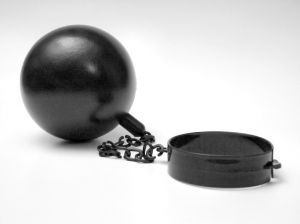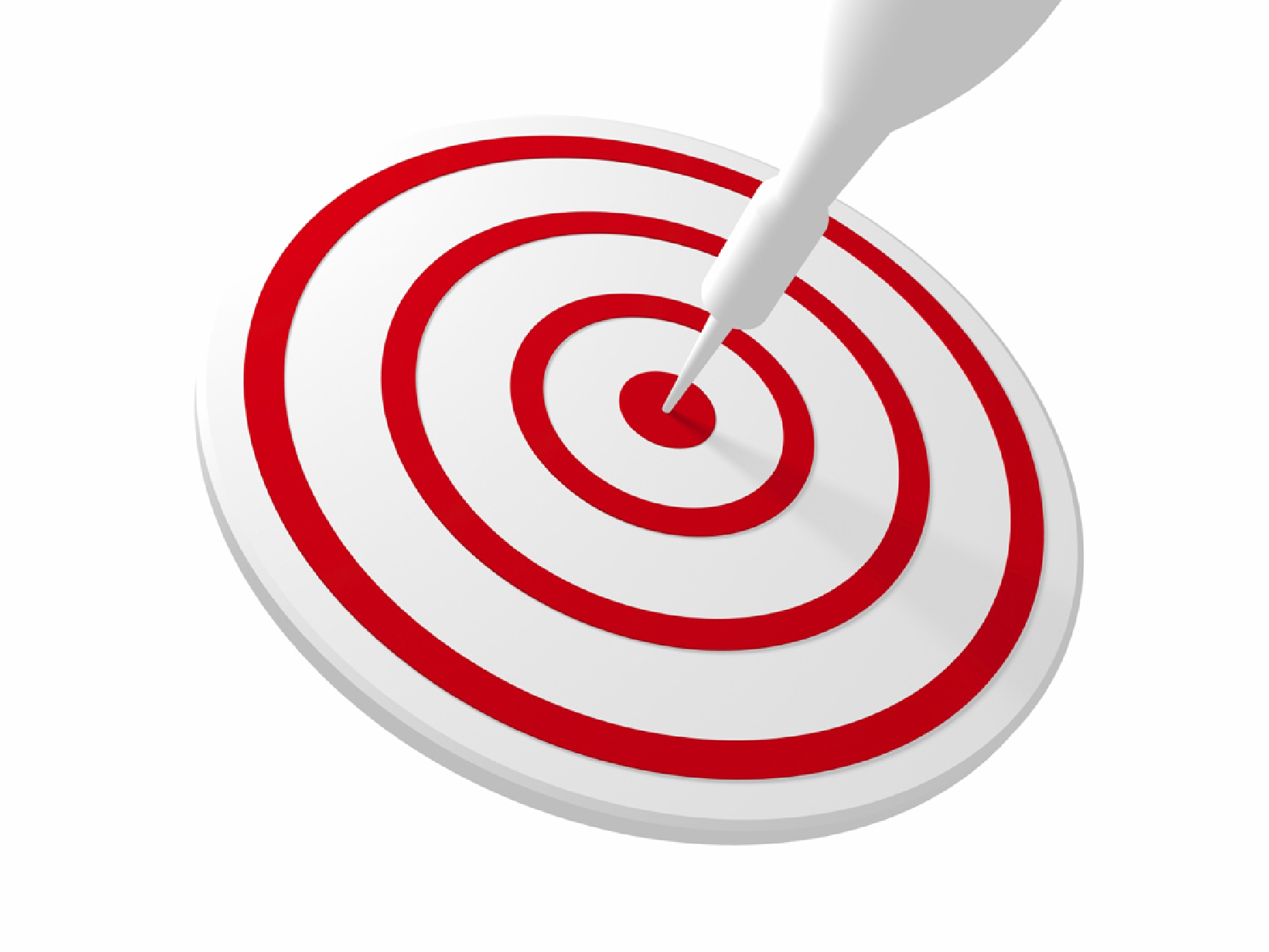Posts Tagged: attachments


On the Dark Side of Setting Goals: Live Interview by David F Leopold
Entrepreneur advocate and expert David F. Leopold hosts a daily online discussion focused on providing sound and powerful advice to the entrepreneur. David, who flys under the moniker “SmallBizDavid” was introduced to our post on The Dark Side of Setting Goals and being intrigued reached out to me via my account on Google Plus and immediately scheduled an interview. Here is the video of that live event. And thanks David, I had a great time!
You can find a full list of David’s interviews and reach out to him on his Google Plus page by clicking here.


The Dark Side of Goals – Does having a preference hold you back?
Most of us have grown up hearing that one must have a goal to succeed. While having goals gives us a target or a direction, does that very step towards success have a darker side – one that potentially limits our success?
Goals have a long history in our culture of being the mother of all of signposts on our path. Hitting our goal was, well… the goal. Meeting that particular expectation might be seen as a successful milestone on the path to our “complete” success – the Holy Grail if you will. If one could just hit their goal, then all would be perfect in their world. We have blogged in the past on how that is backwards thinking. But this is not to say that goals are a bad thing. Just like anything in our world, there is a light and a dark side – a Yin and Yang. Anything we label as “good” can swing the opposite direction if misused.
Having a preference provides a target for your goal but your attachment to how the end result should look may cause you to miss out on what could actually be the best possible outcome. If you are too fixed on things looking a specific way, you might miss out on better opportunities that pass right in front of you. Your awareness has been fixed and you see only the things you have expected to see, and that is a form of limiting thought. Yes the very goal you set to expand your possibilities is, if misused, limiting thought. It’s limiting you to the standards you set rather than leaving the door open for more.
Let’s assume for a moment that your goal is a $250,000.00 per year job in your chosen field – one that would give you options to help others well beyond your present abilities. The Divine wants the very best for you and the world and has greater good in store for you. Perhaps there is a $750,000.00 position that is just waiting for you, but it’s in a different field. You are supremely qualified for it, and the job listing was right there on the very same page of the job site you were looking at, but you chose to avoid reading that column because it’s a field, title or description that is not in your goal plan. The CEO is looking for someone like you, with your experience and your values, but she never gets to meet you – because your focus is too narrow and you see only what you want to see.
Perhaps the right and perfect connection was the person in line behind you at the coffee house. You know, the one you let in front of you, because your that kind of person, only you chose not to respond in your best-self to their light-hearted chit-chat. A choice you made because they were dressed in an old t-shirt and ratty jeans. After-all what could that person do for your goals? Turns out, Mr. T-Shirt was looking for the connections you could provide and in helping him, something magical would have opened up for you and your “goals” through someone you introduced him to. But he obviously wasn’t part of your plan, so for now we’ll never know for certain.
“God Laughs at Our Plans”
We like to think we’re under control. That when we plan things, they will fall in place like perfectly stacked dominoes. Honestly, how many times have your plans actually gone exactly the way you expected? If you were all alone on a deserted island, you might have a shot at it, but the more individuals you invite into your day, life or event, the greater the likelihood that their thoughts, plans and actions will redirect what you had envisioned. On the other hand, there are countless stories of great things happening to people when they least expected it. But just because they did not expect it, does not mean that they weren’t awake enough to take action when it came along. What if these people chose to say “No thanks, it’s not part of my goal”. Is it enough to learn to expect the unexpected, or should we learn to look for the unexpected? Now move in close and pay attention here as this is the secret: you absolutely must be willing to take action on the unexpected. Without action, it may as well have gone un-noticed and without willingness, the mind will learn to tune it out and go back to the old ways. Taking action does not meen a commitment to the new direction, but it should at least lead to having a good look at it’s potential.
“A discovery is said to be an accident meeting a prepared mind.” ~ Albert Szent-
Gyorgyi
Truth is, any action we take cascades through our physical world and the potential results are so vast that a mere shift in your awareness, a simple change of mind or differing decision can and will cascade into untold numbers of shifts in your life and the lives of others. The entire human condition today – all of it – what we eat, where we live, the languages we speak and even our religious views are the result of thoughts, actions and decisions made by countless others who came before us. Imagine how different things might be if Christopher Columbus had decided “Meh…enough of this ‘New World’ talk, lets hit the pub for an ale instead!” One decision, or a few negative words have been enough to bring down Presidents, Kings and nations. On the other hand goals and courageous actions have resulted in some pretty amazing shifts in our world, and yes, built a great nation or two.
Shift your awareness to a broader view. As you set your goals, make room in your thoughts and actions for something greater. Be open to see more, do more, and receive more than what your goal includes. As you awareness expands, so will the outcomes.
We would love to hear your thoughts and experiences, so please share in the comments area below.
You can watch a live interview on this topic here.


The Story of the Two Cats
I’m fighting the urge to call this The Tale of Two Kitties. It was the best of times, it was the worst of times……. 
We currently have two cats and a dog. We lost a cat earlier this year and recently decided that the time was right to get another cat. Tao, our existing cat, is a lovely little creature who never learned to be a lap kitty. She was originally a stray and still maintains that “I can fend for myself” air about her. She used to like to run the hallway and stalk the other cat but since losing him, she’s not done much of the running and obviously, no stalking.
We thought maybe a new cat would be a bit more cuddly to us and would give her a playmate.
Well, it hasn’t worked out quite as we had imagined.
We found a seven month old cat whose family turned up allergic to him. He’s very sweet. He wants to sit with us and be in the same room with us. He’s very social and misses us greatly when we’re not around. And Tao does not like him.
Tao is the princess cat. She has that air of royalty that is entitled but doesn’t get her hands dirty. And she’s always been the Alpha animal. Since the day we brought her home, she’s been the ruling animal personality in this home.
Stitch, the new cat, doesn’t understand that she’s the Alpha and he’s making a serious play for the position.
The position isn’t open and neither one of them can make the other understand that.
But here’s what has struck me: In a very real way, Stitch has claimed the dominant role.
Stitch doesn’t realize it yet. He’s still trying to engage her in a battle. He spends a great deal of time looking for her and watching her and then plotting his attack. He waits until we’re out of sight before making his move. It’s difficult to reconcile the very sweet, wants to be loved cat with the mastermind who has figured out how to get to the other cat.
Meanwhile, Tao spends her time growling at his intrusion into her world. She spends a lot of time under the bed, or under the table, huddled into a pissed off ball of fur. When engaged by Stitch, she lets out this unholy scream of indignation that lets everyone know that not only has her bubble been breached but she’s not going to stand for it.
It’s a very interesting dynamic that has become all consuming. If they are in the same area together, they are stuck in this drama and thus, so are we. If Tao would concede her authority, she’d figure out how to play with him and would have a companion. If Stitch would stop trying to take the authority, he’d find himself with a friend and someone to share the toys with. For all intents and purposes, Stitch is dictating the relationship right now and with that, has gained the upper hand. But he doesn’t see it. And so the cycle continues.
Neither one of the cats is fully happy. Even though they have a nice home, with clean litter boxes and good food that they didn’t have to buy, open or catch, they are not happy. They are consumed by the other one’s presence. It’s blocking their ability to see and appreciate all the wonderful things in their world. And it’s blocking us from being able to give them even more love because we feel apprehensive and divided. Which, of course, they pick up on and are quick to act on. It’s a really vicious cycle.
If either of them realized that that their world would not change no matter who “has the power” , maybe the title wouldn’t matter so much. They both will still be fed at the same time by the same hand in the same house. The toys, beds, cat perches are all still available to them. They are safe and warm and tended to. But they cannot see it because they are so busy suffering their positions.
This situation has made me wonder what similar situations could be in my life. Where am I stuck in a dramatic power play that is taking over my thoughts and energy? What relationships have I decided should go a certain way? And if that relationship doesn’t fit 100% into what I think it should look like, am I plotting and harassing my way through it? Or am I screaming with indignation?
If I were to realize that power is an illusion and claim the reality that my world doesn’t really change if I change my stance, what could my relationships be?
Something to ponder.
“It was the best of times, it was the worst of times, it was the age of wisdom, it was the age of foolishness, it was the epoch of belief, it was the epoch of incredulity, it was the season of Light, it was the season of Darkness, it was the spring of hope, it was the winter of despair…”


A Path to Peace – Spotting Attachments
 It is fairly easy to spot attachments once their symptoms are in your awareness.
It is fairly easy to spot attachments once their symptoms are in your awareness.
Some spiritual teachings offer that the ego is the enemy. I see the ego as potential master or potential servant. The ego can serve us if we are willing to keep vigilant awareness to its attachments. The ego is not just the base survival instinct that can pit us against each other, but it also can be the driving force that will move us out of suffering and into a better space. When anger arises out of ego as a result of an unmet expectation or from a word or two that offended you, or from someone cutting you off in traffic, you have an opportunity to seek what it is that you feel the need to protect.
Attachments lead to lack of compassion and understanding in other’s situations. When things become all about “me,” this is a solid sign that an unhealthy attachment is at work. We are all one with the Divine and with each other. There is no me and you, only us. We are here to work together in each other’s best interests. My way or the highway mentalities create limitations in our lives that would not exist if we were fully co-creative with those we share life with.
Closed-mindedness from selfish attachments manifest actions that damages us, and puts others at risk for harm. Closed-minded attachment to religious beliefs, dogmas and philosophies have been at the root of violent psychotic behaviors for millennium. These “I am right and you are wrong” attachments have caused immeasurable death, destruction and suffering. From the basic back-yard childhood brawl, to all-out genocide, unhealthy attachments are at the root of the behavior.
Part one of this series briefly mentions the sneaky and hard to spot nature of some attachments, so here I offer a few places that I have discovered sneaky attachments in myself and others.
Argumentative or aggressive listening: Are you actively listening with the intention of hearing and valuing what the other person has to say with the same level of respect you deserve, or are you formulating your rebuttal, your argument or your disagreement? If you are not listening properly then an unhealthy attachment to your point of view may be at work. It’s perfectly okay to have an opinion of your own, but when you are closing down to the thoughts and opinions of others, you may be limiting yourself and them from discovering together a better way to a higher end result.
Being too agreeable: In almost stark contradiction to what you just read, constant agreement could be a sign of attachment to being accepted by others, or it may manifest from an attachment to avoid conflict. If you have something valuable to contribute that may go against the opinions of the status-quo, refusing to add it to the mix could easily be a disservice to the highest and best outcome for all involved. The key is to present it from a point of view that is helpful and constructive to the conversation, and avoid dismissing other views as being incorrect, invalid or simply wrong. Focus on communicating in a way that lifts up conversations and those involved rather than tearing things down.
Loyalty to a brand or style of music: Seems crazy doesn’t it? After all, when you like something, you just simply like it. What could possibly be unhealthy about that? Liking something is just fine, but when it comes to a point that you like it so much you dismiss other options simply because they don’t fit the mold, then you have crossed the line into attachment. We like things such as a type of music or a specific brand of ice cream because it brings us some form of pleasure or maybe we trust a brand of car for it’s dependability. It’s perfectly fine to like something, just don’t close your mind to other alternatives. When we refuse to see or experience other options, and sometimes we do so with great disdain, we limit our possibilities for something greater to unfold.
And the extra sneaky: Attachments may have layers. One or more attachments may be the symptom of a deeper attachment at work.
Some example standout symptoms of attachment to watch for are:
- Anger
- Jealousy
- Envy
- Fear
- Frustration
- Sadness
- Grief
Any of those may be an outward expression of an unhealthy attachment to something tangible, such as a relationship or material possession, or something less tangible such as an unmet expectation – like a son or daughter not cleaning their room. While having a clean room is a good thing, your response to the child not following your direction will help guide you to discovery of any attachments. Is your ego under attack because they failed to honor your parental authority, or can you respond to the situation without fear, anger or resentment? There is little we can actually do to “control” another human being. Even at a very young age we have our own capacity for thought and decision making. Having attachment to being “right” and “in-charge” as a parent can reach an unhealthy level. Control is an illusion anyway. Teach right thinking and right choices get made. Try to control someone, even a child, and they will seek to express their own control over the situation and resistance ensues. We can always try to use fear, but is that what we want to teach our future leaders; that ruling with fear is better than careful listening, proper thinking and proper action? Pick your attachments carefully and thoughtfully.
Feel free to chime-in with any attachment symptoms you have uncovered in the comments below.
Next up: Moving past the attachments.


A Path to Peace – Are You Bound by Your Attachments>


Who is serving who – Time to purge?
 We all have it. Stuff. Things. Material goods. Every item in our life has amazing potential power you may not be aware of. Things in our lives have the power to serve us in ways that can enhance our present state of being, and they have the power to suck the life out of our day. I invite you to think about it this way: If the item makes your life easier it is serving you. If the item burdens you, you may be serving it.
We all have it. Stuff. Things. Material goods. Every item in our life has amazing potential power you may not be aware of. Things in our lives have the power to serve us in ways that can enhance our present state of being, and they have the power to suck the life out of our day. I invite you to think about it this way: If the item makes your life easier it is serving you. If the item burdens you, you may be serving it.
It started harmlessly enough, with a seasonal cleaning of the garage. After the fifth or sixth time of stepping over a pet travel crate I began to get frustrated with the entire ordeal – I had been stepping over and around this thing for months. When I get frustrated I know it’s a sign for me that I am either bumping up against my own limiting thoughts, or a blockage of flow. In these cases I have a ritual that helps me: I take a gentle deep breath and drop my attention to my heart space. I feel the love in my heart and I ask for Divine guidance. In this I was quickly reminded of the question: “Is it serving you, or are you serving it?” from a chapter in the book The Prosperity Paradigm by friend and once-upon-a-time mentor: Steve D’Anunnzio.
The concept is simple really. If something in your life either saves you energy or provides you ease, grace or joy, it is serving you by increasing your quality of life. If something requires more energy to maintain than is saved or returned to you, then you are serving it. If that’s the case, it’s time to consider letting the item go as it may no longer serve a true legitimate purpose in your life. Whatever our “stuff” is, it took energy and resources to create it and now that energy can be sitting stagnant on your shelf, drawer, closet or garage floor. Get it back in the flow where someone who can be served by it is waiting.
Albert Einstein once said “Nothing happens in the Universe until something moves.” The Laws governing abundant flow in our lives are very much aligned with that principle. For flow to occur in our lives, we must allow flow. This includes both incoming and outgoing flows. By initiating an outgoing flow we make room in our lives for the incoming good. If we want more good in our lives, we can start by releasing that which no longer serves us. This frees us from carrying the burden of the old and opens our awareness and our environment to be aware of and receive the new abundant good.
If you are ready for more abundant good in your life, find that which no longer serves you and release it.
If there is something constantly taking your resources to maintain it or work around it. Why keep putting up with it?
That dog carrier? It went to a good home – a young lady on freecycle who needed a way to get her rabbit to the vet. Other bags, boxes and clothes went to charity so they could leverage the benefit for someone else’s needs.
Here are a few resources:
Non-profit Thrift Stores
http://www.arcthrift.com/
http://www.salvationarmyusa.org/
http://www.goodwill.org/
Homeless Charities List
http://en.wikipedia.org/wiki/Category:Homelessness_charities
One on One giving

